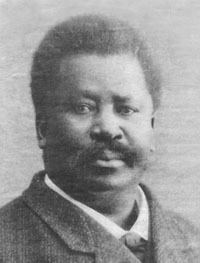Length 2:37 | ||
 | ||
Released 1 June 1967 (1967-06-01) Recorded 17 and 20 February and 28, 29, 31 March 1967 Genre Experimental rockpsychedelic rockcircus | ||
"Being for the Benefit of Mr. Kite!" is a song by the English rock band the Beatles, from their 1967 album Sgt. Pepper's Lonely Hearts Club Band. It was primarily written and composed by John Lennon, although Paul McCartney claims that he also contributed to it. The song is credited to Lennon–McCartney.
Contents
Inspiration
The inspiration to write the song was a 19th-century circus poster for Pablo Fanque's Circus Royal appearance at Rochdale, that Lennon purchased in an antique shop on 31 January 1967, while filming the promotional videos for "Penny Lane" and "Strawberry Fields Forever" in Sevenoaks, Kent. Lennon claimed years later to still have the poster in his home. "Everything from the song is from that poster," he explained, "except the horse wasn't called Henry." (The poster identifies the horse as "Zanthus.")
The song is credited to Lennon–McCartney, but Lennon claimed to have written it entirely himself. McCartney disagrees; in a 2013 Rolling Stone interview states: "I read, occasionally, people say, 'Oh, John wrote that one.' I say, 'Wait a minute, what was that afternoon I spent with him, then, looking at this poster?' He happened to have a poster in his living room at home. I was out at his house, and we just got this idea, because the poster said 'Being for the Benefit of Mr. Kite' – and then we put in, you know, 'there will be a show tonight,' and then it was like, 'of course,'...The song just wrote itself. So, yeah, I was happy to kind of reclaim it as partially mine.'"
Mr. Kite is believed to be William Kite, who worked for Pablo Fanque from 1843 to 1845.
The full text of the original Pablo Fanque's Circus Royal poster is:
PABLO FANQUE'S CIRCUS ROYAL,TOWN-MEADOWS, ROCHDALE.Grandest Night of the Season!AND POSITIVELY THELAST NIGHT BUT THREE!BEING FOR THEBENEFIT OF MR. KITE,(LATE OF WELLS'S CIRCUS) ANDMR. J. HENDERSON,THE CELEBRATED SOMERSET THROWER!WIRE DANCER, VAULTER, RIDER, &c.On TUESDAY Evening, February 14, 1843.Mssrs. KITE and HENDERSON, in announcing the following Entertainments, assure the Public that this Night's Production will be one of the most splendid ever produced in this town, having been some days in preparation.Mr. KITE will, for this night only, introduce theCELEBRATEDHORSE, ZANTHUS!Well known to be one of thebest Broke HorsesIN THE WORLD!!!Mr. HENDERSON will undertake the arduous Task ofTHROWING TWENTY-ONE SOMERSETS,ON THE SOLID GROUND.Mr. KITE will appear, for the first time this season,On the Tight Rope,When Two Gentlemen Amateurs of this Town willperform with him.Mr. HENDERSON will, for the first time in Rochdale,introduce his extraordinaryTRAMPOLINE LEAPSANDSOMERSETS!Over Men & Horses, through Hoops, over Garters,and lastly through aHogshead of REAL FIRE!In this branch of the profession Mr. H challengesTHE WORLD!For particulars see Bills of the day.JONES & CROSSKILL, PRINTERS AND BOOKSELLERS, YORKSHIRE STREET, ROCHDALE."Mr. J. Henderson" was John Henderson, a wire-walker, equestrian, trampoline artist, and clown. While the poster made no mention of "Hendersons" plural, as Lennon sings, John Henderson did perform with his wife Agnes, the daughter of circus owner Henry Hengler. The Hendersons performed throughout Europe and Russia during the 1840s and 1850s. A hogshead is a large wooden cask.
Recording
One of the most musically complex songs on Sgt. Pepper, it was recorded by the Beatles on 17 February 1967 with overdubs on 20 February (organ sound effects), 28 March (harmonica, organ, guitar), 29 March (more organ sound effects), and 31 March. Lennon wanted the track to have a "carnival atmosphere", and told producer George Martin that he wanted "to smell the sawdust on the floor." In the middle eight bars, multiple recordings of fairground organs and calliope music were spliced together to attempt to produce this request. In a 1968 interview, Martin recalled that he achieved "this by playing the Hammond organ myself and speeding it up."In addition to the Hammond organ, a 19th century steam organ was found for hire to enhance the carnival atmosphere effect. After a great deal of unsuccessful experimentation, Martin instructed recording engineer Geoff Emerick to chop the tape into pieces with scissors, throw them up in the air, and re-assemble them at random.
Before the start of the first take, Lennon sings the words "For the benefit of Mr. Kite!" in a joke accent, then Emerick announces, "For the Benefit of Mr. Kite! This is take 1." Lennon immediately responds, "Being for the Benefit of Mr. Kite!", reinforcing his title preference from a phrase lifted intact from the original Pablo Fanque poster. The exchange is recorded in The Beatles Recording Sessions (slightly misquoted) and audible on track 8 of disc 2 of Anthology 2. The original recording can also be heard during the loading screen for the song if it is downloaded in the video game The Beatles: Rock Band.
Although Lennon once said of the song that he "wasn't proud of that" and "I was just going through the motions," in 1980 he described it as "pure, like a painting, a pure watercolour."
It was one of three songs from the Sgt. Pepper album that was banned from playing on the BBC, supposedly because the phrase "Henry the Horse" combined two words that were individually known as slang for heroin. Lennon denied that the song had anything to do with heroin.
Personnel
Live performances
Paul McCartney performed the song live for the first time by any Beatle on 4 May 2013 at the Estádio Mineirão, Belo Horizonte, Brazil and throughout his 2013–2015 Out There tour. Additionally, McCartney performed the song live on the Colbert Report on 12 June 2013 as well as during his One on One tour in 2016.
